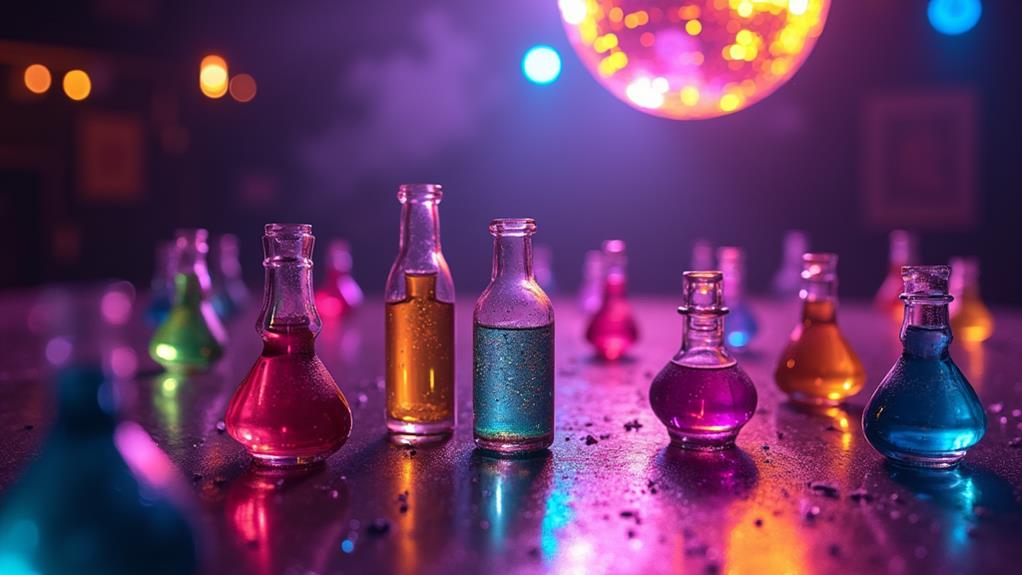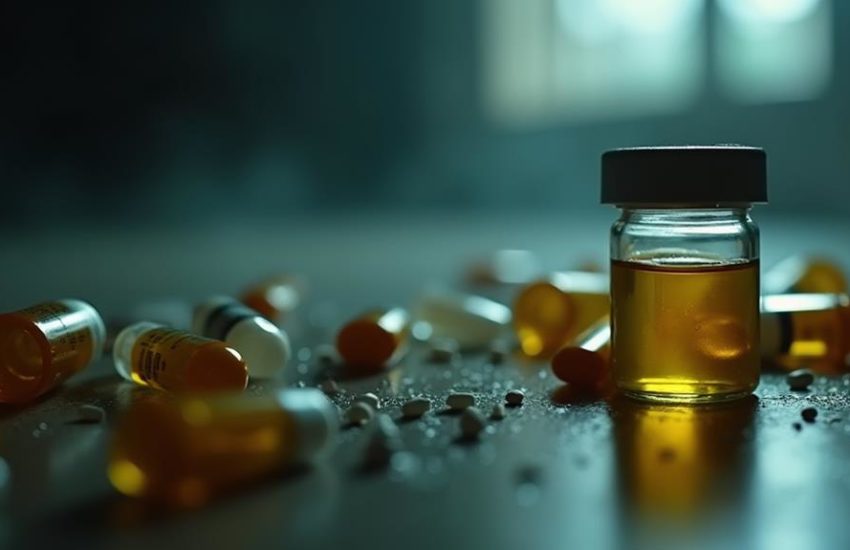A Walk on the Wild Side: A Guided Journey Through the Perilous World of Poppers
"A Walk on the Wild Side: A Guided Journey Through the Perilous World of Poppers" explores the complex terrain of alkyl nitrite inhalants. Originating as a treatment for angina, poppers gained recreational popularity in the 1960s, particularly within the LGBTQ+ community. These chemicals produce rapid, short-lived effects including euphoria and vasodilation. Legal status varies globally, from readily available to strictly controlled. Health risks range from minor irritations to severe complications like retinal damage. Poppers' cultural significance persists, alongside ongoing debates about personal freedom and public health. This journey through the world of poppers reveals a nuanced interplay of chemistry, legality, and societal impact.
The Origins of Poppers
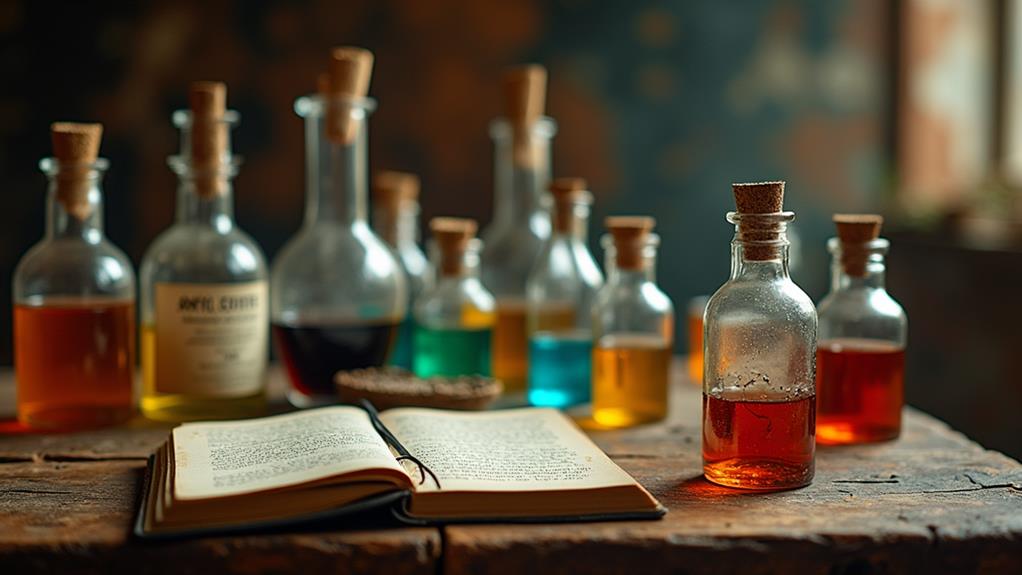
The origins of poppers can be traced back to the mid-19th century when amyl nitrite was first synthesized by French chemist Antoine Jérôme Balard in 1844. Initially developed as a treatment for angina pectoris, the compound's vasodilatory effects were quickly recognized by the medical community.
Throughout the late 19th and early 20th centuries, amyl nitrite gained popularity as a remedy for various cardiovascular conditions. Besides cardiovascular benefits, visual disturbances were noted among users.
Historical usage of poppers evolved beyond medical applications, with recreational use emerging in the 1960s. The LGBTQ+ community, in particular, embraced poppers for their euphoric and muscle-relaxing properties.
This shift in usage led to changing societal perceptions, as poppers became associated with counterculture and alternative lifestyles. In spite of ongoing debates surrounding their safety and legality, poppers have maintained a significant presence in certain social circles, reflecting their complex journey from medical innovation to recreational substance.
Chemical Composition and Effects
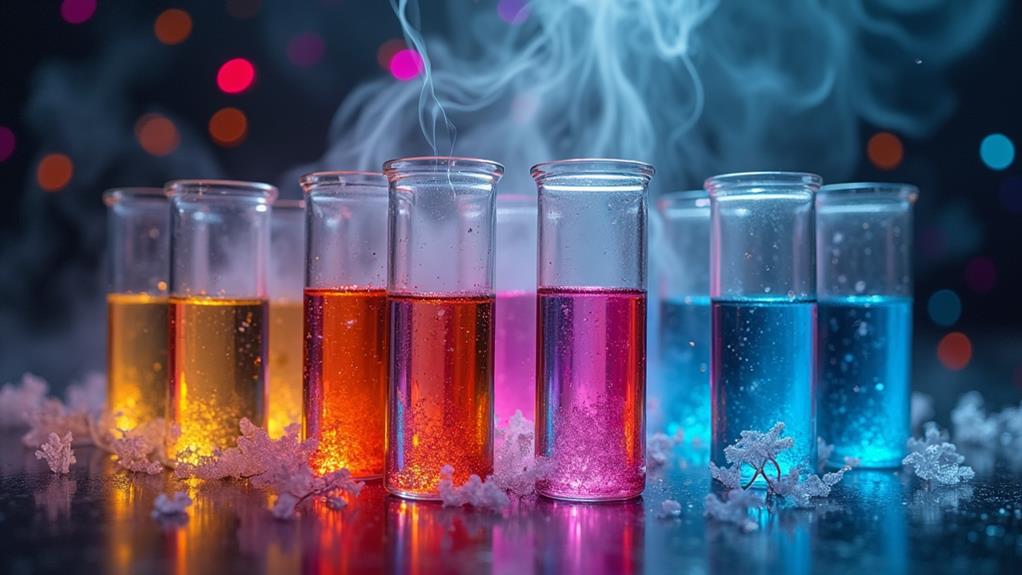
Poppers primarily consist of alkyl nitrites, a class of chemical compounds characterized by their volatile nature and distinctive effects on the human body. The most common variants include amyl nitrite, butyl nitrite, and isobutyl nitrite.
These substances share a similar chemical structure, featuring a nitrite group bonded to an alkyl chain. Upon inhalation, poppers rapidly enter the bloodstream, causing immediate physiological effects. Users typically experience a sudden rush of warmth, dizziness, and euphoria, accompanied by muscle relaxation and increased heart rate.
The vasodilating properties of alkyl nitrites lead to a temporary drop in blood pressure, enhancing sensory perceptions and intensifying sexual experiences for many users. Nevertheless, these effects are short-lived, typically lasting only a few minutes.
In spite of their brief duration, users report health effects, including eyesight issues and mental health changes, raising concerns about long-term use. Understanding the chemical composition and physiological effects of poppers is essential for users seeking to navigate their experiences responsibly.
Legal Status Around the World

The legal status of poppers varies greatly across the globe, reflecting diverse approaches to substance regulation. International regulations concerning alkyl nitrites, the primary components of poppers, are not uniformly applied, resulting in notable regional differences.
In some countries, such as the United Kingdom, poppers remain legal and readily available, whereas others, like Canada, have implemented stricter controls. The United States presents a complex environment, with federal law considering certain alkyl nitrites as banned substances, yet enforcement practices often vary by state.
Several European nations maintain a relatively lenient stance, allowing sale for specific purposes. As with many psychoactive substances, the legal framework surrounding poppers continues to evolve, influenced by shifting cultural attitudes, medical research, and political considerations.
Concerns about misleading labeling and lack of regulatory oversight add to the complexity of enforcing consistent legal standards. Understanding these nuances is essential for those traversing the international environment of poppers use and distribution.
Health Risks and Concerns
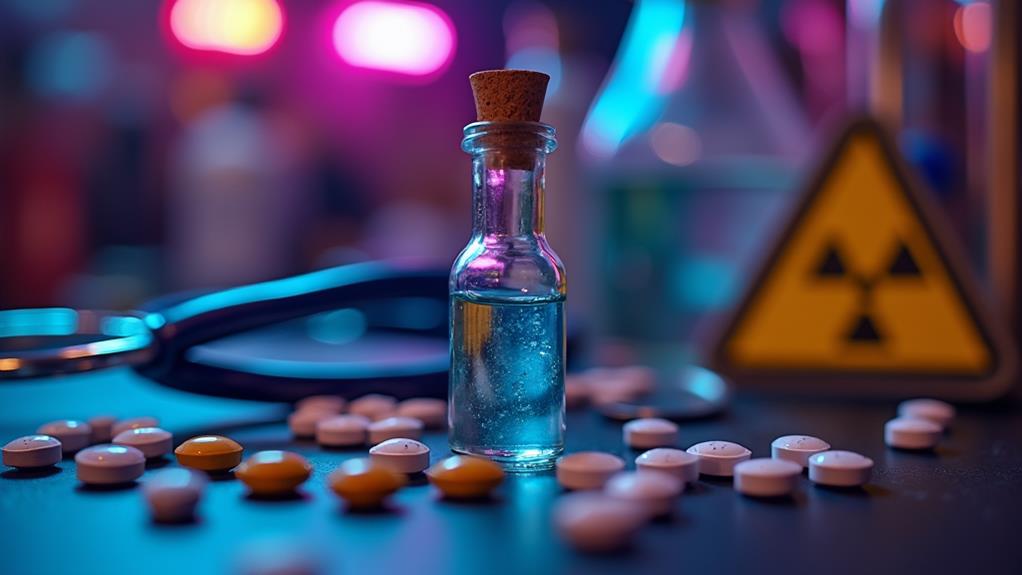
Numerous health risks and concerns are associated with the use of poppers, warranting careful consideration by potential users and healthcare professionals alike.
Short-term effects include headaches, dizziness, and skin irritation, whereas prolonged use may lead to more severe complications such as retinal damage and methemoglobinemia. The inhalation of poppers can cause a sudden drop in blood pressure, potentially resulting in fainting or cardiovascular issues. Users report experiencing a scratchy throat, coughing, and breathing difficulties after use, leading to dissatisfaction with some commercial formulations.
Chronic use is linked to significant respiratory issues, decreased lung function, and increased risk of pulmonary problems.
Although the addiction potential of poppers is considered low compared to other substances, regular use may lead to psychological dependence. Safe usage guidelines emphasize avoiding consumption with erectile dysfunction medications, as this combination can cause dangerous blood pressure drops.
Users should likewise be cautious of the flammable nature of poppers and potential interactions with other drugs. Healthcare providers stress the importance of understanding these risks to make informed decisions about usage.
Cultural Impact and Controversy
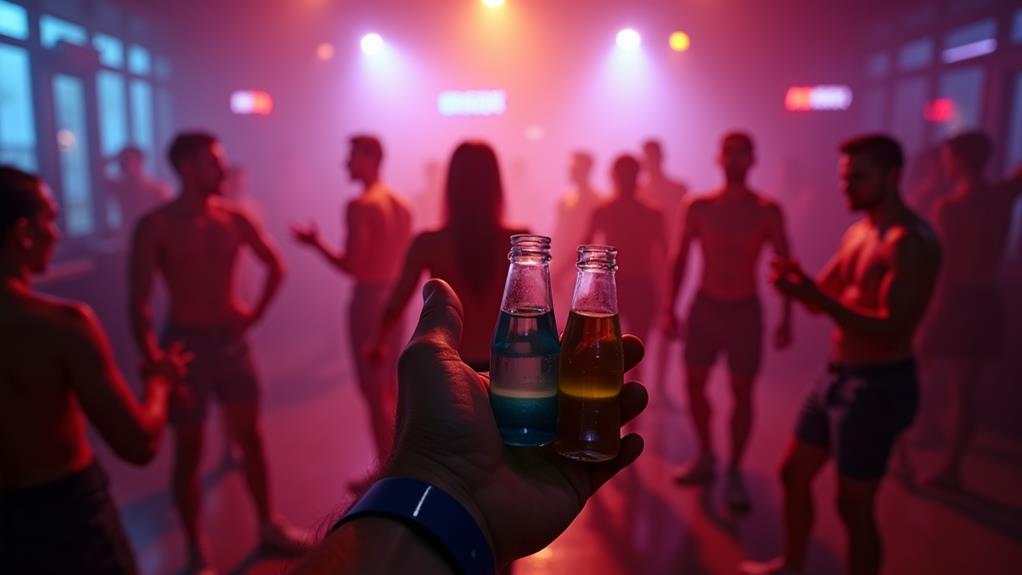
Cultural Impact and Controversy
How have poppers influenced popular culture and sparked controversy? Poppers have occupied a unique position in social discourse, straddling the line between recreational substance and cultural symbol. Their association with the LGBTQ+ community, particularly gay and bisexual men, has contributed to both their stigmatization and their status as a subcultural icon.
This connection has influenced public perception, often leading to misconceptions about their use and users. In spite of their brief euphoric effect and muscle relaxation properties, health risks associated with poppers cannot be ignored. Inhalation can lead to headaches, dizziness, and more serious respiratory issues.
The debate surrounding poppers' legal status has further fueled controversy, with discussions centering on issues of personal freedom, public health, and social acceptance. In some circles, poppers have become emblematic of broader struggles for sexual liberation and anti-discrimination.
Nevertheless, their use remains contentious, with critics citing health concerns and potential for abuse. This ongoing dialogue reflects deeper societal tensions regarding drug policy, sexual norms, and individual autonomy.
Call Us To Assist You
The journey through the world of poppers reveals a complex environment of chemical, legal, and cultural dimensions. Like a double-edged sword, these volatile substances offer fleeting euphoria as they potentially inflict lasting harm. As society grapples with their use, a delicate balance must be struck between personal freedom and public health. The future of poppers remains uncertain, teetering on a tightrope of scientific research, policy decisions, and evolving social norms.
